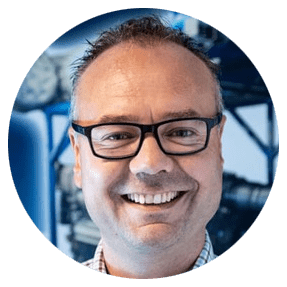09/28/2021
An exhaust aftertreatment system cleans the exhaust gases produced by marine diesel engines. This reduces nitrogen oxide emissions and soot particles in the ambient air surrounding the ship and on board.
Modern exhaust systems consist of different components which can be incorporated into an exhaust silencer.
The harmful pollutants in exhaust gases are created by two factors.

Dirty exhaust gasses are fed from the exhaust outlet of the turbo engine into the exhaust gas aftertreatment system where they are cleaned.
The Emigreen diesel particulate filter (DPF) traps and regenerates soot and other particles and converts the soot particles into ash through active or passive regeneration. This reduces the amount of particulate matter.
If there is also a need or requirement to reduce nitrogen oxide (NOx) emissions, a selective catalytic reduction (SCR) unit can be installed next to the DPF system. These systems are often installed together but can also operate as stand-alone units.
Selective catalytic reduction reduces NOx emissions by injecting an ammonia solution (urea) into the hot exhaust gas flow.
This creates a homogeneous mixture of NOx and ammonia, which flows through the SCR reactor where it is converted into harmless nitrogen gas (N2) and water vapour (H2O), reducing harmful emissions to between 1.8 and 2.1 grams per kilowatt hour.
This process is illustrated below.

Emigreen® specialises in the design and delivery of exhaust gas aftertreatment systems for marine diesel engines.
Unique benefits of our systems:
Our solution incorporates the combined power of two systems: a diesel particulate filter (DPF) and a selective catalytic NOx reduction (SCR) unit; complemented by an exhaust silencer.

Emigreen®’s modern exhaust gas aftertreatment systems typically consist of two or three components:
Our SCR’s, DPF’s and silencers can be a standard design, or a custom design.
An exhaust gas cleaning system uses a catalyst (ammonia) to cause a chemical reaction that converts nitrogen oxide (NOx) into diatomic nitrogen (N2) and water vapour (H2O).
The water vapour evaporates into the air.
How this process works step by step:
Depending on performance requirements, this system can also be configured with an integrated ammonia slip catalytic converter to eliminate ammonia slip.
A SCR system is essential to ensure compliance with IMO Tier III emission standards.

A diesel particulate filter (DPF) is a ceramic soot filter that traps carbon particles produced by diesel engines. During the regeneration process the soot trapped in the filter is converted to ash.
We offer two types of DPF system.
A DPF system with passive regeneration (Emigreen Delta)
A DPF system with active regeneration (Emigreen Alfa Alfa)

The release of hot gas into the atmosphere increases the level of exhaust noise. This may mean that noise reduction is required.
The solution must address the full spectrum of exhaust noise, which contains
Each frequency requires a different acoustic approach. By using a different technology to attenuate each frequency it is possible to achieve maximum noise reduction.
These carefully tailored adjustments help prevent excessive back pressure that would otherwise reduce engine efficiency.


Jelle Westerhof is sales manager at Emigreen® and applies our industry-leading solutions to the projects of our clients. Feel free to reach out to Jelle for feedback on this article, for questions and for a free consultation.
